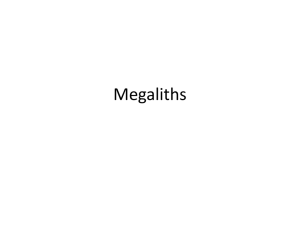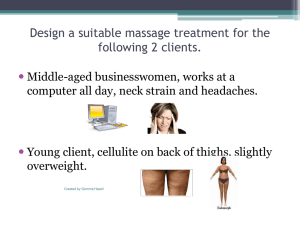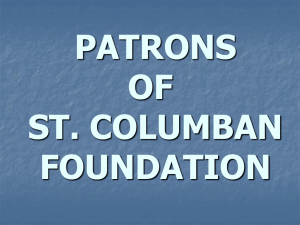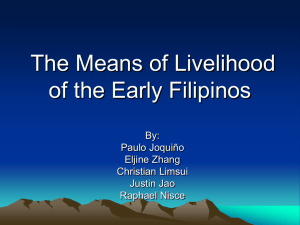B28 Workbook - NPTC Moodle
advertisement
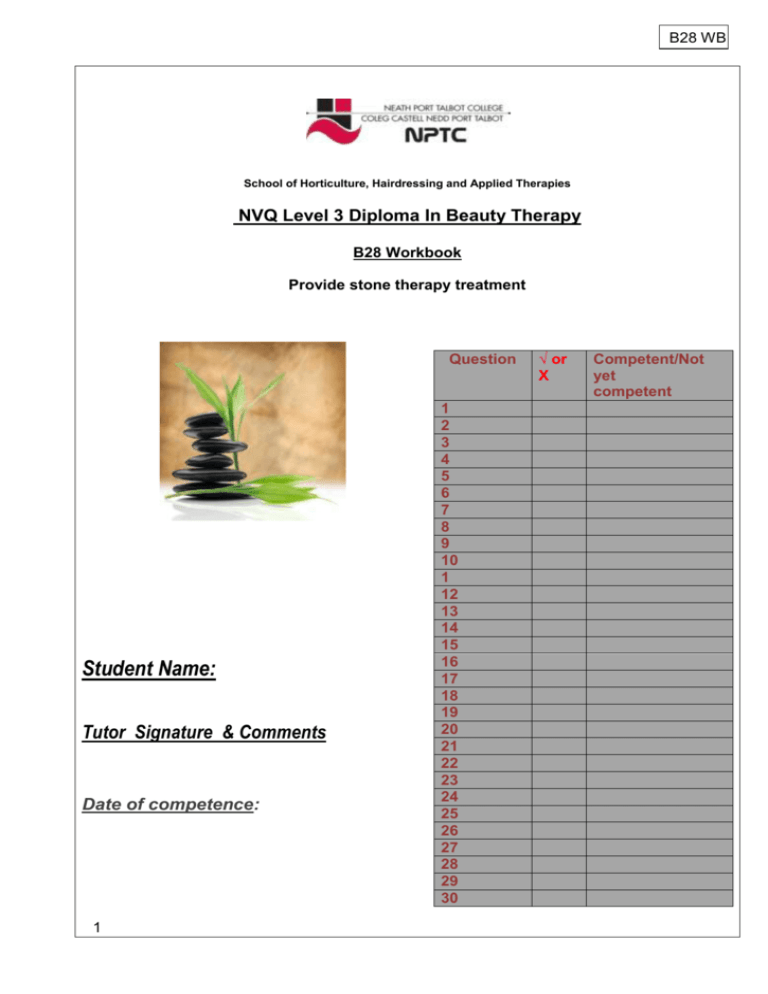
B28 WB School of Horticulture, Hairdressing and Applied Therapies NVQ Level 3 Diploma In Beauty Therapy B28 Workbook Provide stone therapy treatment Question Student Name: Tutor Signature & Comments Date of competence: 1 1 2 3 4 5 6 7 8 9 10 1 12 13 14 15 16 17 18 19 20 21 22 23 24 25 26 27 28 29 30 √ or X Competent/Not yet competent B28 WB 1. Why is it important to use effective and thorough consultation techniques to ensure a successful hot stone therapy? 2. Explain how you would set up the treatment area for stone therapy treatments. 3. Contra-indications to stone therapy treatment Contra-indications are conditions which can restrict or prevent treatment. It is very important that you check for contra-indications; otherwise the client could be put at risk. With a partner, discuss each of the contra-indications below. Complete the table explaining why the treatment will be prevented or restricted. 2 B28 WB Contra-indication Areas of skin aggravated by heat Chemotherapy and radiotherapy Clinical obesity Contagious skin diseases Deep vein thrombosis Diabetes 3 Does this prevent or restrict treatment? Explanation B28 WB Contra-indication Does this prevent or restrict treatment? Explanation Epilepsy Loss of skin sensitivity Varicose veins 4. How stone therapy works Show your understanding of how stone therapy works by selecting the correct words from the box to complete the gaps in the passage below. placements elements honour heat ice holistic chilled hot massage hot stones cool extension repetitive waterproof thermometer spiritually chakras gifts universe fire fire 4 B28 WB The hot stones are heated in a big electrical heater base with inner water reservoir (rather like a slow cooker used in domestic cooking). The ______________ are placed in the order in which they are going to be used, on a towel to eliminate noise, and then water is poured over them and heated up. A _______________________________ will tell the therapist when the working temperature has been reached. When the client is fully prepared for massage, the therapist removes the stones, drains and dries them and then works them over the body, both as _________________ instruments and as ________________. The _________ stones are _______________ and kept in a small refrigerator or cool box ready for use alternately with ____________stones, or they can be used on their own. On one level, _______ stones within massage are a labour-saving device for the therapist. The stones aid penetration of movements by the ___________emitted, warming the underlying tissue, and they also act as a smooth ________________ of the hands, making contact with the skin in place of the therapist – so reducing ________________ strain on the hands and wrists. On a deeper _____________ level, the stones have their own high vibrationalEnergy, connecting us to Mother Earth, Father Sky and the five ________________: water, wood, earth (metal), air (ether) and ________. These elements are provided by the earth and are the building blocks of every living thing in the universe, including the human body. Holistic therapists believe that we should ____________ the five elements as they are __________ from the ________________ and relate deeply to our bodies on all levels – physically, emotionally and ______________________. The stones can be used to open up the _____________ of the body, and chilled stones can be used on areas of inflammation and injury – just as a sports massage therapist would use ice. In fact, hot and cold stone therapy is often advertised as a ‘________ and ______ massage’. 5 B28 WB 5. Benefits of stone therapy What are the benefits of stone therapy to the client and to the therapist? Fill in the mind maps below with your ideas. Benefits to client 6 B28 WB Benefits to the therapist 7 B28 WB 6. The seven major chakras ‘Chakra’ is a Sanskrit word meaning ‘wheel’. Each chakra has a number of attributes, including a colour, a relation to an element and a connection to the maintenance of certain physical and emotional functions. There are seven major chakras in the body. Research the seven major chakras, and fill in the missing information in the table below. If it helps you to remember the chakra colours, colour in each row with the appropriate colour. Chakra Crown (7) Location Third eye (6) Slightly above centre of eyebrows Base of throat Heart (4) Solar plexus (3) Colour Violet/white Blue Centre of chest 8 Communication Self-expression Thymus Yellow Orange Root (1) Organ/Gland Connection Spirituality Wisdom Higher self Pituitary Imagination Intuition Personal power Self-control Gonads Adrenals Sexuality Security Grounding B28 WB 7. Key terms A healing crisis therapy Fainting Basalt Chakras Geothermotherapy Marma pressure points Semi-precious stone Trigger points Holding Labradorite Stone placing Cryotherapy Marble stone Piezoelectric effects/vibrations Sensitivity test Tucking Combing and stripping Marine stone Recharging Stroking Crystal Reiki Thermotherapy Vaso-dilation Vaso-constriction The correct term for the use of stone therapy. There are 107 points all over the body which represent where the vital energies flow. This process restores the energy levels of the stones, discharges all the negative energy they have absorbed throughout the treatments and reconnects to their roots in nature. It takes place on a monthly cycle. The application of heat and cold to alleviate pain and stiffness in muscles and joints and to increase blood flow to the area. Blood vessels open and blood flow is increased. Dense, heavy volcanic rocks which have been naturally shaped and polished by the sea or riverbed over thousands of years. Found in waters around volcanic islands such as Hawaii, they come from the sediment on the ocean floor. An organic rock, mostly made from calcite and limestone. The stone stays cool due to its calcium content. Most stones and rock have some degree of crystal within them, so all rock could be called crystal, but what we think of as beautifully colored crystal are really gem stones. Sanskrit word meaning wheel. Spinning vortexes of energy. A dark blue crystal used for recharging the stones. Healing technique to tap the Universal Life Energy and use it to heal and balance living beings. Thermal sensitivity test using hot and cold test tubes. 9 B28 WB Cooling the body using extreme cold, either locally in the form of ice packs or generally, when the whole body is artificially cooled. Blood vessels narrow, so reducing blood flow. A deep, intense stroke using the stone on its edge, working the muscle along its entire length from its origin to its insertion. A superficial gliding stroke often performed with the outer edge of the stone. These can be achieved by the rhythmical tapping of two stones together, creating sound – one stone stays in contact with skin, while the therapist taps it on top with the other stone. To tuck the stones under the client for additional heat. The heated stones can be held in the hands or used as a prop during treatment for specific problems in any region. Knots of tension which form from adhesions within the muscle fibres. These can be dispersed by using the edge of the stones and maintaining pressure for 30–90 seconds in the area, or when you feel the knot ease away, it melts underneath the stone. The stones are placed on or underneath the body with a cover of a towel or sheet to prevent burning, similar to a hot water bottle cover. May occur if the client has bottled up their emotions, been overdoing things, has high stress levels, suffered a bereavement or stored lots of negative energies. The treatment often relaxes the client so much that the blockages are removed. Tears are not uncommon and the client may feel completely drained and very tired. A temporary loss of consciousness. The body’s natural defence mechanism when there is a loss of blood flow and oxygen to the brain: the body falls down into a horizontal position moving the brain on to the same level as the heart, and ensuring it receives vital blood flow. The belief that certain crystals have healing powers. 10 B28 WB 8. Properties and uses of stones Give a brief description of the properties and uses of each of the types of stone below. Type of stone Basalt stone Marine stone Marble stone Semi precious stone 11 Properties and uses B28 WB 9. How often would you advise the client to have further stone therapy treatments? 10. List five other treatments that could be incorporated into stone therapy. 11. What lifestyle advice could you give to a client? 12. List three aftercare points for your client to follow in between treatments. 12 B28 WB 13. Why would you encourage a client to maintain positive thoughts after a treatment? 14. How would you disinfect the stones read for your next treatment? 15. Explain the importance of adopting the correct posture throughout the treatment and the impact this may have on yourself and the outcome of the service. 13 B28 WB 16. Why is it important to maintain the client’s modesty, privacy and comfort during the treatment? 17. Explain the importance of using the correct –sized stones for the therapist’s own hands and the client’s physical characteristics. 18. Give examples of the different oils used for stone therapy treatments and their effects? 14 B28 WB 19. What areas of the body would you cleanse in preparation for the treatment? 20. The five elements The five elements used in stone therapy are wood, fire, earth, metal and water. Research each of the elements, and fill in the missing information in the table below. Body organs Wood Liver Gall bladder Fire Sense organs Tissue Earth Mouth Bone Grief Flavours 15 Water Ear Blood vessels Pulse Emotions Anger Colour Metal Lungs Large intestine Sweet Red White (gold, silver) Black Blue B28 WB 21. What is the purpose of placing the stones on the spinal layout, above the back of the knees, hands and toes? 22. Describe the different types of safe, purpose-built stone heating equipment and how to use and position them safely. 23. Explain the recommended operating temperatures for hot and cold stones. 16 B28 WB 24. How would you handle the stones safely to avoid excessive noise and disturbance during the treatment? 25. Summarise the benefits and effects of using hot and cold stones on the body systems, either in isolation or combining the two temperatures during a treatment. 17 B28 WB 26. Explain the areas of the body and body characteristics needing particular care when undertaking stone therapy treatments, and how would you adapt a stone therapy treatment for male and female clients? 27. Evaluate the advantages of stone therapy treatments. 18 B28 WB 28. Describe the lifestyle factors and changes that may be required to improve the effectiveness of the treatment (e.g. healthy eating, fluid intake and regular exercise. 29. What further treatments would you recommend? 19 B28 WB 30. Troubleshooting For each of the following situations, explain what you would do: The stones are too hot. The stones are not hot enough. The cold stones are too cold. The client feels the stones are too hot in the spinal layout. The front chakra stones are too heavy for the client. There seems to be a problem with the heating unit. 20



